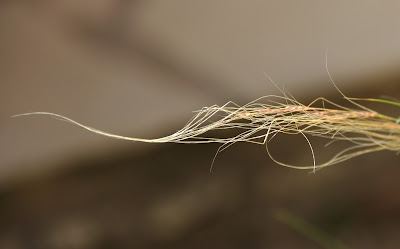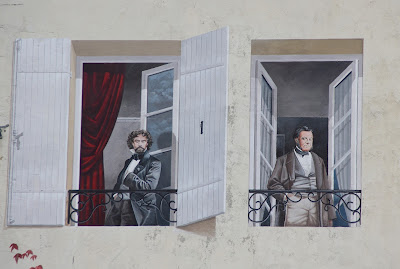Saturday, August 06, 2016
Book Notes: God and Race in American Politics (A Short History) by Mark Noll
Mark Noll is an insightful historian, with a special in American religious thought and history, who is always worth reading. His, "God and Race in American Politics: A Short Introduction" is no exception to that, but is an excellent summary of a vast, complex topic. This book is the written form of a series of lectures Noll was invited to give at Princeton University a decade ago, subsequently published by Princeton University Press. As such, the form is different from his most of his works, in that it is not primarily a piece of original research supported by rafts of references; but rather an idiosyncratic review of the subject.
Going back into the antebellum period, Noll explores the way in which both sides in the conflict, which would escalate into Civil War in the 1860s, sought to bolster their ideological cause with reference to the Christian Bible. In Noll's account, the Bible's seeming toleration of slave-holding (much disputed though this was), was completely mishandled by both sides; who failed to reckon with the Bible's indisputable anti-racism. The fact that nothing like American plantation slavery was discussed in the Bible, and that virtually every slave in the New Testament was white, was an unacceptable truth avoided by racist Unionists and Confederates alike. Noll then observes a shift in the conflagration of the 1860s however, in which cultural authority shifted from the biblical text, to a more general form of civic religion - a significant departure from the America of the pilgrim fathers.
Roaming through the the Reconstruction and so-called 'Redemption' eras with some skill, Noll focuses on the way in which the foundations for later gains were made in the internal organisation of the African-American churches. Furthermore Noll makes the following unusual observation about the types of religion which were successfully then harnessed by the Civil Rights movement. He notes that progressives, temperance advocates and proclaimers of Raushenbusch's social gospel avoided the glaring sins of racism, to focus on urban development and alcohol. While he notes that many Civil Rights leaders were exponents of Liberal-leaning theology (notable Martin Luther King Jr's leaning towards Tillich), that was not the case for vast swathes of the African American believers who joined the great crusades for liberty in the 1950s and 60s:
Formal religious thought from elites was always complemented in the civil rights movement by a less cerebral, more visceral version of the Christian faith that remained closer to the ardent supernaturalism and straightforward biblicism of the autonomous black denominations and, beyond that, to slave religion.......To be sure, this faith had been severely censured by W.E.B. Du Bois and other reformers who castigated its adherents as drugged by an opiate that disabled them from effective action in the here and now. But Charles Payne, who has written perceptively about the life-and-death struggles of the civil rights movement in Mississippi, understood things better when he described the strongly supernaturalist and otherworldly faith practised in tight black community churches, usually with females predominating: "A more flexible model [then thinking of this religion as an opiate] might hold that involvement in such communities ordinarily militates against involvement in social movements, but once any one person in the network becomes politically involved, the strength of the social ties within the network is likely to draw other members in."Payne's own research substantiated his theoretical analysis when he followed the civil rights activities of those who read the Bible simplistically, looked for immediate consolation from an active God, and held precritical views of Jesus Christ and the Holy Spirit as acting directly in the everyday world for redemptive purposes. He found that such ones, once they had been galvanised into social action, were able to exert the same force in the public square as they had experienced in the private religious lives. (p114-5)
Noll presents helpful, and revealing analysis like this across the range of eras and issues which constitute the critical junctures in the convoluted story of Race/Religion and Politics in American History. His controlling idea is that when the forces of politics and religion have been made to coalesce around key issues - their joint influence becomes a decisive factor in shaping American history. He defends this notion admirably throughout the book too, as he ranges through the political realignment of the South, the ructions of the 1960s, and on through the rise of the Right and Reagan and the religious right to more contemporary issues.
Finally, Noll's conclusion is highly critical of the American Christian Church. In his assessment, Christianity has provided untold benefits to the USA over the centuries of its existence he notes. "And yet.... and yet.... The American Political system and the American practice of Christianity, which have provided so much good for so many people for so many years, have never been able to overcome race." (p178)
Noll's "short history", is two hundred pages long! But it is shrewd, fast-paced and lively; and engaging throughout. There are (obviously) great swathes of material in the book which have not been mentioned here. This review has sought only to highlight some of the most significant ones, and to give a short sample of the writing. Nevertheless, it is hoped that this is sufficient to give a flavour of the book, which is a highly engaging introduction to the field.
Thursday, August 04, 2016
Tuesday, August 02, 2016
Monday, August 01, 2016
In the Gorge de Galamus
The Gorge de Galamus in the Pyrenees is a spectacular place full of surprises, our day there was probably the highlight of our summer road trip. The drive through the narrow road, along the rocky ledges of the gorge road is quite extreme. At peak periods they operate a 'tidal' one way system, so you never meet anyone coming the other way. We arrived before this was running, and had a few interesting manoevers to make to squeeze the cars through, which thankfully we managed unscathed.
At the far end of the gorge, there is a carpark, viewpoint, a cafe and a path which descends down to "The Hermitage". At the bottom of the path a door carved into the cliff walls leads into a surprisingly beautiful underground church, in a cave.
The Gorge de Galamus has much more in store though. Walking back along the road, reveals a descent track down into the gorge itself. Slippery, and strewn with loose scree, its a tricky march down, and a chest-level wade through the narrowest and deepest section of the river to enter the most remarkable river playgound.
The river tumbles over endless waterfalls and into countless deep pools. There are some for swimming in, loads for the kids to play in, and several which are deep enough to leap into from the high rocks around them.
After many hours of fun, we got the kids to clamber back up to the cafe, and the car for the drive back to Carcassonne. Happy Days!
Labels:
Family,
Friends,
Fun,
Holidays,
Photography
Friday, July 29, 2016
At the Weeping Window
It was mere coincidence that meant we were winging our way southwards down the A1 between Calais and Paris, a hundred years to the day since the start of the Battle of The Somme. The French toll-roads are fast and we were belting along at 130kmph across a low-lying wet valley, when I noticed the small sign by the roadside, marking "The River Somme". A hundred years may seem like a long time, but it was within the lifetime of two of my four grand-parents. The Somme Valley today is green, and wet, and criss-crossed by streams, canals and drainage ditches. It is not hard to imagine how months of digging, shelling and vast movements of armies could reduce it to the infamous swamps and saturated killing fields of 1916. As I sped across the Somme, it was hard not to imagine the thousands of men who climbed out of their trenches exactly a century before, wave after wave of whom were mown down by relentless machine-gun fire. 21,000 British and 8,000 German troops lay dead by the end of the first day of the battle, as 19th Century military tactics were launched against 20th Century weaponry. Harder to imagine was that Britain allowed up to a quarter of a million under-age soldiers to join the slaughter, the youngest of whom was just 13 years of age, despite the legal age for overseas combat being 19.
In the rear-view mirror of the car, I could not only see The Somme (a river whose name means 'Tranquility') sliding into the distance; but my 16 and 14 year old sons gazing out across the French landscape. I shuddered as the mental image of fresh-faced Tommies hearing the whistles and going over-the-top, merged with the sight of my sons sitting in the back of the car. I am now to old to be of any use to any army other than one lead by the likes of Captain Mainwaring. Lord save us from days in which our youth are called-up to be butchered for Queen and Country.
The Centenary of WWI is being marked in Perth at Balhousie Castle, home of The Black Watch, with the installation of the Weeping Window, a display of individually crafted porcelain poppies. These bright red flowers of Flanders fields, where so many fell, are the symbol of loss, remembrance and respect for those who died. Arranged like this, the poppies are powerful, dramatic and thought-provoking.
The many and the one
Thursday, July 28, 2016
Subscribe to:
Posts (Atom)
























































